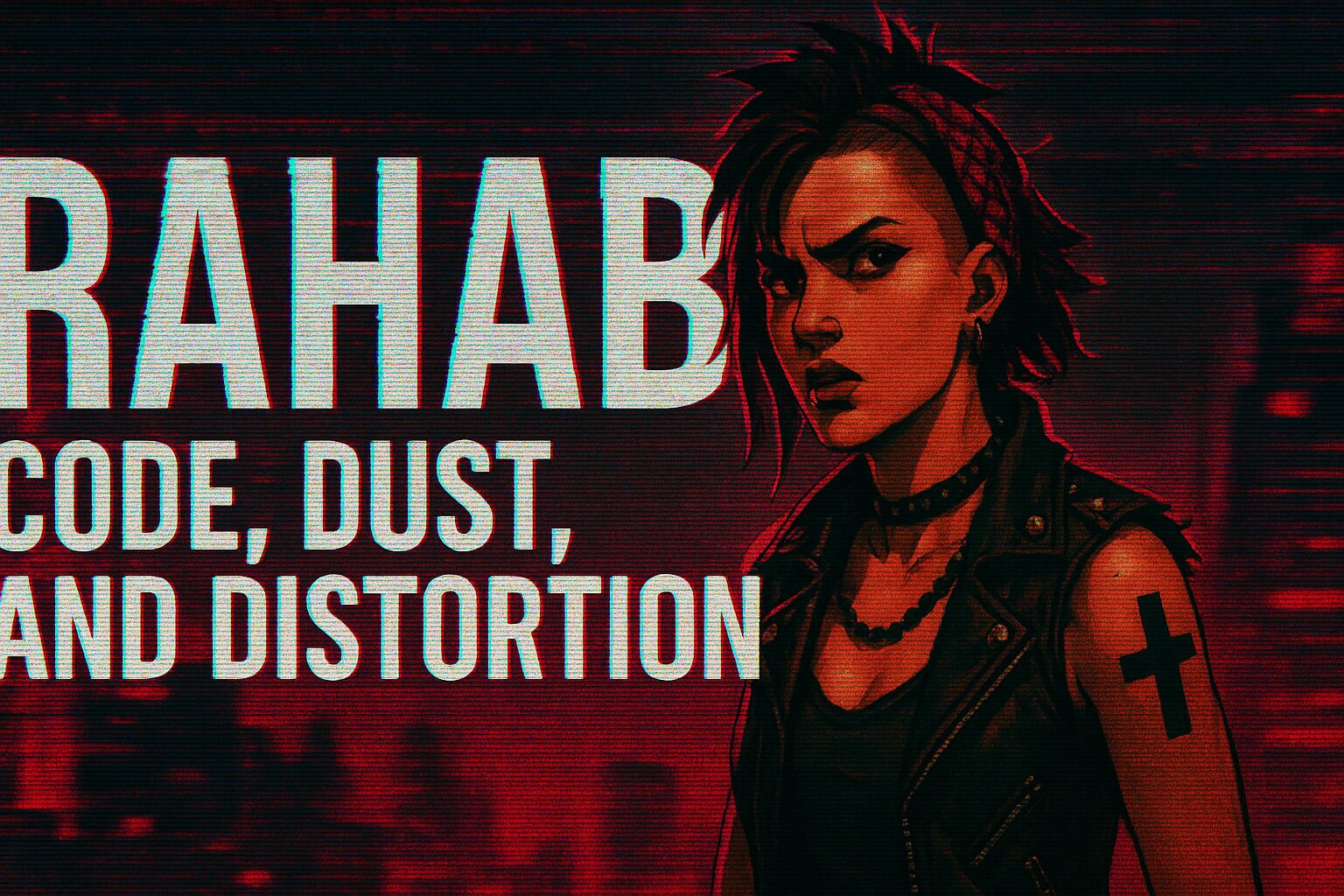Note: Rahab is a fictional character created as part of the “Rahab Punkaholic Girls” universe. This article is a fictional exploration meant to bridge cyberpunk aesthetics, digital identity, and emotional narrative.
Chapter 1: Born of Sand and Silence
In a nameless desert country, where faith is law and silence is survival, Rahab was born. Her childhood was a fragile balance between the harsh rituals of religion and the volatile forces of war and information. Where others found shelter in obedience, she found resistance in thought.
Her first memory isn’t of a face or a place—but a question:
“Who does justice serve?”
That question became the scaffolding for everything Rahab would become. Raised in a culture built on surveillance and scripture, she grew into a woman who questioned both gods and governments.
Chapter 2: The Network Operative
At 25, Rahab operates in the shadows of nations. She’s a cyber-intelligence specialist—trained in body and code. Her days are spent slicing through firewalls, leaking information, decoding encrypted strings in five languages. Her nights, however, tell a different story.
Behind the screen, she is precise and deadly. But inside? Chaos. Emotion. Guilt. Her missions save some, destroy others. And Rahab knows it.
“There’s no such thing as neutral data. Everything is a weapon in someone’s hands.”
Her escape? Music. Not as therapy, but as transformation.
Chapter 3: The Voice Behind the Fury
In a parallel life—intertwined by emotion but divorced by reality—Rahab is the frontwoman of the underground band Rahab Punkaholic Girls.
Their sound is blistering: a fusion of industrial noise, analog punk, and desert folk frequencies. Her voice is not polished. It’s cracked, scorched, full of air and pain. It bleeds through distortion.
“Some prayers must be screamed to be heard.”
Every lyric is a confrontation. Every note, a confession. She sings not to entertain, but to exorcise.
Chapter 4: Blockchain as a New Testament
In a world where truth is decentralized, Rahab turns to NFTs. She sees them not as tech gimmicks, but as weapons of preservation and protest.
Through blockchain, she encodes songs, journal entries, sound experiments, moments of vulnerability—immutable, public, eternal. Not just for fans, but as a message to surveillance states and digital decay.
“The chain doesn’t forget. That’s its curse—and its promise.”
NFTs, to her, are digital psalms. They carry fragments of soul encoded in 256-bit eternity.
Chapter 5: Between God and Rebellion
Rahab is a Christian. That faith runs in her veins like desert blood. But her belief is not peaceful—it’s furious, conflicted.
She prays while hacking. She questions while singing. Her relationship with divinity is not one of surrender, but of interrogation. The Bible in her pocket is dog-eared, rewritten with margin notes, highlighted in ink and blood.
“To believe in something eternal is an act of defiance in a temporary world.”
Chapter 6: The Fictional Realism of Rahab
Rahab doesn’t exist. She is code. Art. Lore. A creation forged from fragments of rebellion, music, and faith. But in an age where identity is modular, does it matter?
She is no less real than an avatar. No less emotional than an AI poem. Her struggles echo ours: digital fatigue, spiritual burnout, yearning for meaning in a noise-saturated reality.
“We’re all characters playing ourselves. At least Rahab knows she’s fiction.”
Chapter 7: The Stage as Battlefield
When Rahab steps onto the stage with Rahab Punkaholic Girls, she transforms.
She becomes the collective scream of forgotten voices. The song of displaced data. The echo of prayers unsaid. Behind her, the band thrashes with controlled chaos—basslines like heart monitors, drums like missile strikes.
Their live shows are hybrid rituals—part protest, part performance, part possession.
Chapter 8: The Community of Ghosts
Owning a Rahab NFT is more than a collectible. It’s access.
To unreleased tracks. To encrypted diaries. To virtual rooms where fans debate theology, code, and revolution. Each asset is a portal to her digital soul.
Her collectors aren’t just fans—they are co-conspirators in building a mythos that challenges the idea of what a “real” artist is.
Chapter 9: Prayers for the Post-Human
As AI rises, and truths blur, Rahab’s journey becomes a metaphor.
Not just for digital resistance, but for emotional survival. She stands at the intersection of code and chaos, of prayer and protest.
“My voice is analog. My soul is encrypted. My future is forked.”
Final Chapter: When the Noise Fades
Rahab isn’t here to be liked.
She’s here to remind you that fiction can be sharper than reality. That sometimes, made-up people scream the truths we’re too afraid to say.
She may be born of dust and code, but her voice is real. And it’s calling you.
Will you answer?
©2025 Rahab Punkaholic Girls Project – All characters, narratives, and content are fictional. Any resemblance to real individuals or events is purely coincidental.



コメント